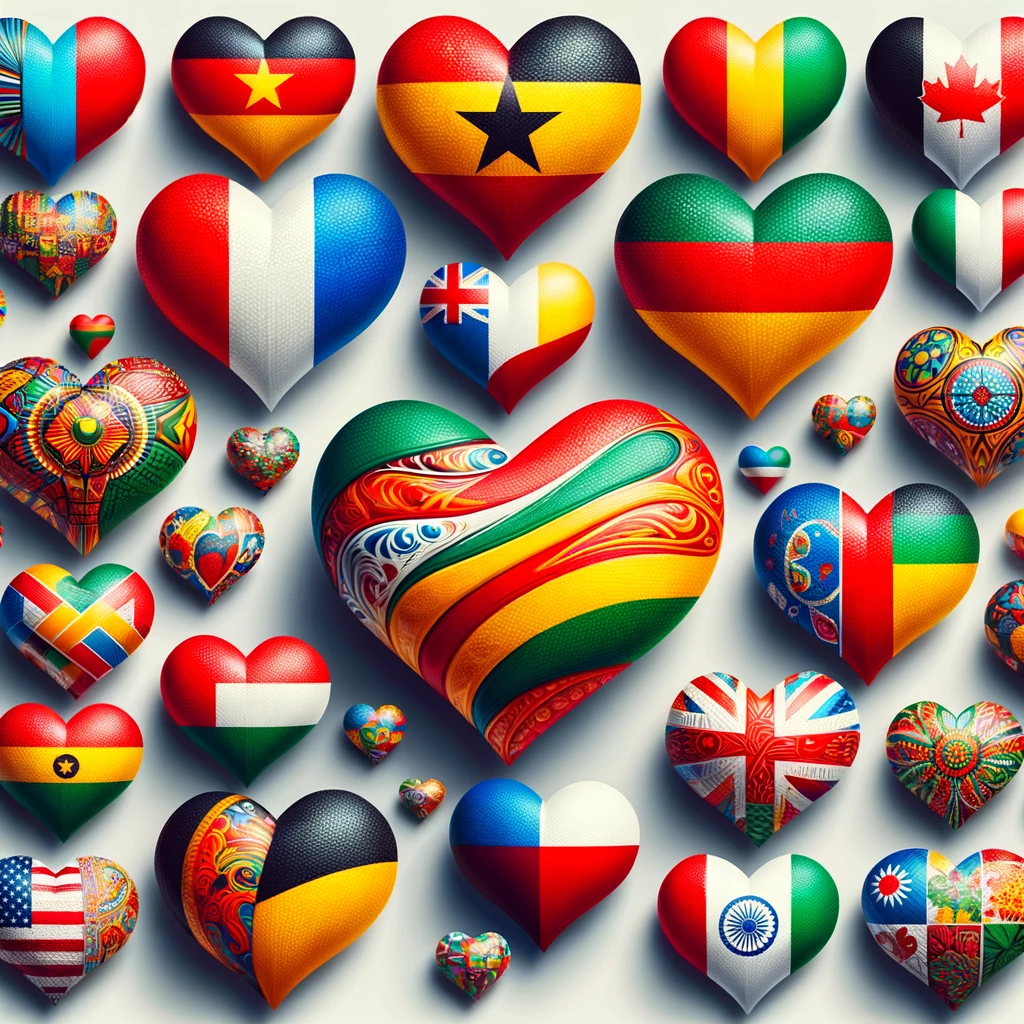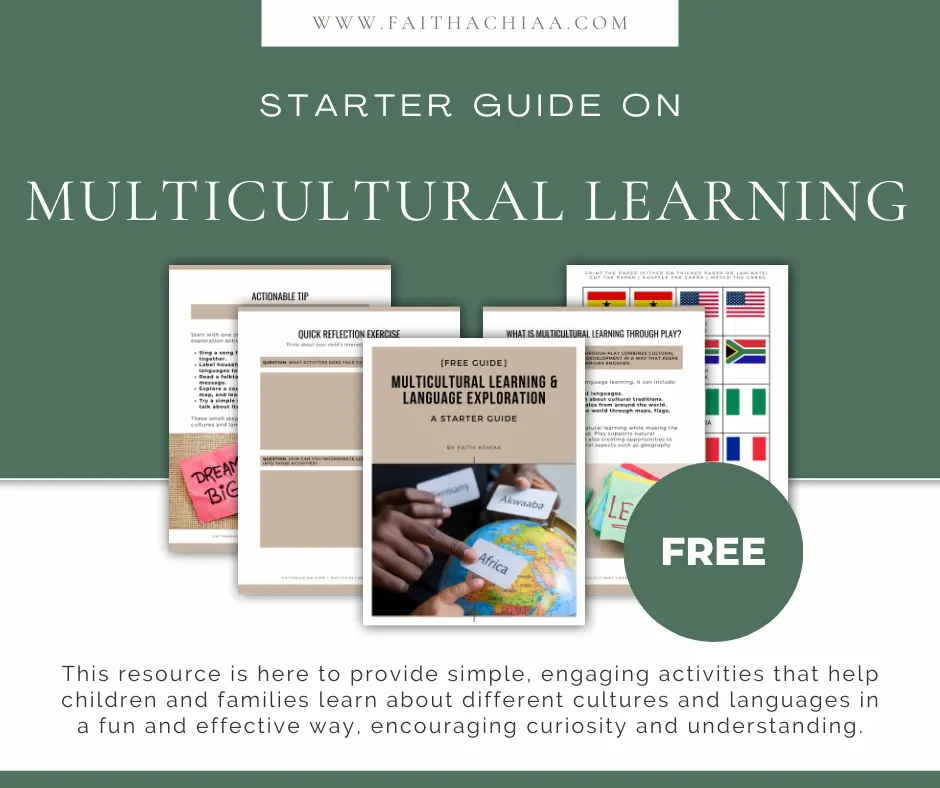130+ Translations of Heart from Cultures Around the World

Have you ever stopped to think about how beautifully ‘love' and words for ‘heart' in different languages shine?
It's like discovering hidden treasures, each language uncovering a unique layer of a universal emotion, where we're all explorers of words and cultures.
But this journey isn't just for us adults; it's an opportunity to share with the next generation.
Learning about the translation of heart from cultures around the world isn't just about words; it's a teachable experience that connects our children with the many layers of diverse cultures.

Teaching our kids the beauty of languages opens doors to understanding and embracing the world's diversity.
Just imagine the joy in their eyes as they say ‘heart' or ‘I love you' in languages they might already be familiar with, showcasing and connecting with friends and native speakers of various foreign languages.
Significance of the Word for ‘Heart' in Various Cultures
Cultural Significance and Symbolism
The word ‘heart' holds significant cultural symbolism in various cultures. In Western cultures, the heart symbol is commonly associated with love and affection, often depicted in heart-shaped cards and gifts.
In contrast, in Japanese culture, the heart symbol is associated with the soul and is often depicted as a geometric shape with a pointed bottom.
In ancient Egyptian culture, the heart symbol was believed to be the center of a person's being and was considered the source of their emotions, wisdom, and personality.

Cultural Traditions and Rituals
The word ‘heart' is also significant in various cultural traditions and rituals. In some cultures, the heart is believed to be the seat of the soul, and during death rituals, the heart is often weighed to determine the fate of the deceased in the afterlife.
In Chinese culture, the heart is associated with the element of fire and is believed to be the center of the body's energy.
Traditional Chinese medicine focuses on balancing the heart's energy to promote overall health and well-being.
In Mexico, the vibrant and colorful tradition of papel picado involves cutting intricate designs into sheets of tissue paper.
Heart-shaped papel picado is a common sight during celebrations like Dia de los Muertos (Day of the Dead) and weddings, symbolizing love's eternal presence even in the face of loss.
In Akan culture, hearts are often used as symbols in various aspects of life, including traditional art, and jewelry.
The symbol “Akoma” represents the heart and love. It signifies patience and endurance in relationships and is a reminder of the importance of compassion and understanding in human interactions.
The ‘Akoma Ntoaso' symbol, referred to as the ‘linked hearts' symbol, is a part of the Akan Adinkra symbols.
It signifies the enduring nature of love and the interconnectedness of people's hearts in the community.
These are just a few examples of how cultures around the world embrace the heart as a symbol of love and incorporate it into their traditions and rituals.
Each tradition carries its unique significance, but all share a common thread – the celebration of love and connection.
In some cultures, there are untranslatable words that describe the heart's emotions and feelings.
Understanding the cultural significance of the heart can help us appreciate and respect the diversity of beliefs and traditions across different cultures.

Expressions of Love and Words for Heart in Different Languages
Love is a universal emotion that transcends language barriers. However, how different languages express love and the concept of the heart can vary.
Here are some interesting insights into how different languages and cultures approach the language of love.
Translations for ‘Heart' in Other Languages
Sending a heart emoji or a heart-shaped greeting card on Valentine's Day is a universal ‘translation' that is often used to express feelings of love, compassion, affection, and appreciation.
In many languages, the word for heart is directly translated to represent the physical organ.
However, in some languages, the word heart is used to describe emotions and feelings associated with love and affection.
Exploring Words for Heart in 130+ Different Languages below. Let me know how many you recognize and if there's another translation you know of.

- Afrikaans: hart
- Akan: akoma
- Albanian: zemra
- Amharic: ልብ (ləb)
- Arabic: قلب (qalb)
- Armenian: սիրտ (sirt)
- Assamese: হৃদয় (hrôdôy)
- Aymara: lluqhi
- Azerbaijani: ürək
- Bambara: ale
- Basque: bihotza
- Belarusian: сэрца (serca)
- Bengali: হৃদয় (hrôdôy)
- Bhojpuri: दिल (dil)
- Bosnian: srce
- Bulgarian: сърце (sŭrtse)
- Catalan: cor
- Cebuano: kasingkasing
- Chichewa: mtima
- Chinese (Simplified): 心 (xīn)
- Chinese (Traditional): 心 (xīn)
- Corsican: core
- Croatian: srce
- Czech: srdce
- Danish: hjerte
- Divehi: ހިތް (hiḍu)
- Dogri: दिल (dil)
- Dutch: hart
- Esperanto: koro
- Estonian: süda
- Ewe: dzi
- Filipino: puso
- Finnish: sydän
- French: cœur
- Frisian: hert
- Galician: corazón
- Ganda: omutima
- Georgian: გული (guli)
- German: Herz
- Goan Konkani: काळीज (kāḷīj)
- Greek: καρδιά (kardiá)
- Guarani: korasõ
- Gujarati: હૃદય (hr̥daya)
- Haitian Creole: kè
- Hausa: zuciya
- Hawaiian: Puʻuwai
- Hebrew: לֵב (lev)
- Hindi: दिल (dil)
- Hmong: plawv
- Hungarian: szív
- Icelandic: hjarta
- Igbo: obi
- Iloko: puso
- Indonesian: jantung
- Irish: croí
- Italian: cuore
- Japanese: 心臓 (shinzou)
- Javanese: ati
- Kannada: ಹೃದಯ (hṛdaya)
- Kazakh: жүрек (júrek)
- Khmer: បេះដូង (besdong)
- Kinyarwanda: umutima
- Korean: 마음 (maeum)
- Krio: at
- Kurdish (Kurmanji): dil
- Kurdish (Sorani): دڵ (dil)
- Kyrgyz: жүрөк (jürek)
- Lao: ຫົວໃຈ (hua chai)
- Latin: cor
- Latvian: sirds
- Lingala: motema
- Lithuanian: širdis
- Luxembourgish: Häerz
- Macedonian: срцето (srçeto)
- Maithili: हृदय (hr̥daya)
- Malagasy: fo
- Malay: hati
- Malayalam: ഹൃദയം (hr̥dayaṁ)
- Maltese: qalb
- Manipuri (Meitei Mayek): ꯊꯃꯣꯏ (luiram)
- Maori: ngakau
- Marathi: हृदय (hr̥daya)
- Mizo: thinlung
- Mongolian: зүрх (zürkh)
- Myanmar (Burmese): နှလုံး (hna.lum)
- Nepali: मुटु (muṭu)
- Northern Sotho: pelo
- Norwegian: hjerte
- Odia (Oriya): ହୃଦୟ (hr̥daya)
- Oromo: onnee
- Pashto: هرات (hrat)
- Persian: قلب (ghalb)
- Polish: serce
- Portuguese: coração
- Punjabi: ਦਿਲ (dil)
- Quechua: sunqu
- Romanian: inimă
- Russian: сердце (serdtse)
- Samoan: loto
- Sanskrit: हृदयम् (hr̥dayam)
- Scots Gaelic: cridhe
- Serbian: срце (srce)
- Sesotho: pelo
- Shona: mwoyo
- Sindhi: دل (dil)
- Sinhala: හදවත (hada-wata)
- Slovak: srdce
- Slovenian: srce
- Somali: wadnaha
- Spanish: corazón
- Sundanese: haté
- Swahili: moyo
- Swedish: hjärta
- Tajik: дил (dil)
- Tamil: இதயம் (idhayam)
- Tatar: йөрәк (yöräq)
- Telugu: గుండె (guṇḍe)
- Thai: หัวใจ (hua jai)
- Tigrinya: ልቢ (libi)
- Tsonga: mbilu
- Turkish: kalp
- Turkmen: ýürek
- Ukrainian: серце (sertse)
- Urdu: دل (dil)
- Uyghur: يۈرەك (yürek)
- Uzbek: yurak
- Vietnamese: trái tim
- Welsh: calon
- Xhosa: intliziyo
- Yiddish: הארץ (harts)
- Yoruba: okan
- Zulu: inhliziyo

Wondering how to introduce your kids to different cultures and languages in a fun, engaging way?
Learning about the world doesn't have to feel like another task – it can be an exciting adventure for the whole family.
Commonalities in Words for ‘Heart' in other languages
Despite the differences in translations for the word “heart,” there are some commonalities among languages.
For example, many European languages use a variation of the Latin word “cor” for heart, such as “coeur” in French and “corazón” in Spanish.
These languages also use similar words to describe love and romantic feelings, such as “amour” in French and “amor” in Spanish.

Phonetic Representations of ‘Heart'
When we look at the English word “heart” in contrast to different languages, we find variations in spelling, phonetics, tonation, and pronunciation.
While these words share the same meaning, their phonetic sounds vary due to the linguistic characteristics of each language.
- Pronunciation Examples: Consider “corazón” in Spanish and “cœur” in French, where each language imparts its specific sounds and accents to the word.
- Language Specifics: Phonetic representation highlights linguistic traits, as some sounds may not have equivalents in other languages.
- Accent and Dialect Influences: Even within one language, regional accents and dialects shape how “heart” is pronounced in their language.
- Importance of Pronunciation: Accurate pronunciation is important for effective communication, and accurate and respectful engagement with native speakers.
10 Inspirational Quotes About the Heart
The inspirational quotes beautifully express the profound wisdom and significance of the heart.
These timeless words of wisdom, attributed to renowned figures, have resonated with so many people around the world.
- “Wherever you go, go with all your heart.” – Confucius
- “The best and most beautiful things in the world cannot be seen or even touched – they must be felt with the heart.” – Helen Keller
- “A loving heart is the truest wisdom.” – Charles Dickens
- “Keep love in your heart. A life without it is like a sunless garden when the flowers are dead.” – Oscar Wilde
- “The only lasting beauty is the beauty of the heart.” – Rumi
- “Home is where the heart is.” – Pliny the Elder
- “You don't love someone for their looks, or their clothes, or for their fancy car, but because they sing a song only you can hear.” – Oscar Wilde
- “The best way to find yourself is to lose yourself in the service of others.” – Mahatma Gandhi
- “The heart that loves is always young.” – Greek Proverb
- “The heart knows reasons that reason does not know.” – Blaise Pascal
These heartfelt and timeless words of wisdom serve as a reminder of the profound significance of the heart and its role in our journey through life.
May these quotes encourage us to embrace life with wholeheartedness, seek wisdom through love, and appreciate the lasting beauty within our hearts.
Teaching Love, Language, and the Symbol and Translation of ‘Heart' to Kids

Teaching love, along with the symbol and translation of ‘heart,' to kids is a rewarding experience that nurtures empathy, fosters kindness, and instills understanding and compassion in young minds.
While the core concepts of love and the heart are universal, acknowledging cultural differences and being sensitive to them can lead to a more well-rounded and empathetic understanding.
This understanding is particularly valuable in an increasingly interconnected world.
This educational journey goes beyond mere words; it's about helping children grasp the deeper emotions and values associated with these concepts.
It's an opportunity to cultivate empathy, kindness, and a sense of connection – essential qualities for nurturing compassionate individuals who appreciate the diversity of our world and carry forward a legacy of love.
Tips and Strategies for Teaching
- Use age-appropriate language: It is important to use language that is appropriate for the age of your children. Younger children may not understand complex concepts, while older children may find simple language boring.
- Use authentic language content: Incorporate authentic language content that is relevant to the culture and background of your children. This will help them understand and relate to your teaching concepts.
- Use visual aids: Visual aids such as pictures, flashcards, videos, and diagrams can help reinforce the concepts you are teaching. They can also make the learning experience more engaging and enjoyable.
- Practice, practice, practice: Practice is key to learning. Encourage your children to practice expressing love and kindness in their daily lives at home and in their interactions with others.
- Involve family members: Encourage your children to involve other family members in their learning experience. This can help reinforce the concepts you are teaching and create a positive learning environment.
Love in Everyday Family Life

In everyday family life, love is often demonstrated through various gestures and traditions that are unique to each family.
Let's explore the multilingual expressions of affection, family traditions, and gestures, and ways to incorporate “heart” and “I love you” into your family life.
Being intentional about expressing love in its various forms, and living and sharing the emotion that we cherish throughout family activities and interactions, ensures that it is more than just a word or a symbol but a way of life and a legacy of love.
Multilingual Expressions of Affection
In a multilingual family, it is common to hear different languages spoken throughout the day. Saying “I love you” in different languages can be a fun and educational way to express your affection and teach your children new words. Here are some examples:
- French: Je t'aime
- Spanish: Te quiero or Te amo
- Italian: Ti amo
- Mandarin Chinese: Wǒ ài nǐ (我爱你)
- Arabic: Ana behibek (أنا بحبك)
- Akan: Me dɔ wo
- Igbo: A hụrụ m gị n'anya
- German: Ich liebe dich
- Afrikaans: Ek het jou lief
Family Traditions and Gestures

Every family has its own set of traditions and gestures that express love and affection. These can range from simple acts of kindness to elaborate celebrations. Here are some examples:
- Cooking and sharing meals
- Giving hugs and kisses
- Celebrating birthdays and other special occasions
- Creating family photo albums or scrapbooks
- Writing love letters or sweet and thoughtful notes to each other
It's important to encourage a balance that allows for individuality and healthy boundaries within these traditions and gestures, ensuring that each family member can express themselves and grow while still cherishing the bonds of love.
Incorporating “Heart” and “I Love You”
There are many ways to incorporate “heart” and “I love you” into your family life to strengthen your relationships and create lasting memories. Here are some ideas:
- Use heart-shaped sticky notes to leave messages for your family members
- Make heart-shaped pancakes or cookies for breakfast
- Say “I love you” before saying goodbye or going to bed
- Create a family “I love you” jar and fill it with notes of appreciation and affection
- Use sign language to say “I love you” by making the sign for “I,” “L,” and “Y” with your hand
Love and the Heart as Universally Cherished Values
Love is a profound emotion that knows no boundaries, cherished by people worldwide. It has inspired poets, writers, artists, and even the creation of this blog post.
Often, the heart symbolizes love and is considered the core of emotions and feelings. Love is a universal language that is understood by people of all cultures and languages, expressed in different ways, and there are beautiful words in different languages that convey the depth of love, making it clear and understandable to people worldwide.

Significance of Affection and Harmony
Love and affection are important values in many cultures, often associated with harmony and peace. In the biblical sense, “for God so loved the world” is a testament to the significance of love in human life.
The heart is also a symbol of love and affection, and it is often used to represent these values in art and books.

In exploring the translations of heart from cultures around the world, a profound truth emerges: Love and the symbol of the heart know no boundaries or language barriers.
It's the invisible thread that binds us together, regardless of our origins or the tongues we speak.
Our journey is dedicated to discovering a more profound way to convey our emotions, one that goes beyond mere translations.
It's about uncovering words that resonate with the heart in unexpected and beautiful ways.
Let us continue this path, together, as we delve deeper into the heart's universal language and the expressions of love in various tongues.
As we do, let's also pass this invaluable knowledge to the next generation.
Teaching our children these words and the emotion behind it is like giving them the gift of expressing love in its purest form – a treasure that will enrich their lives forever.
IF THIS POST RESONATES WITH YOU, CONSIDER EXPLORING MORE OF OUR WEBSITE AND PINNING ONE OF THE IMAGES BELOW!
Thank you for your support.








